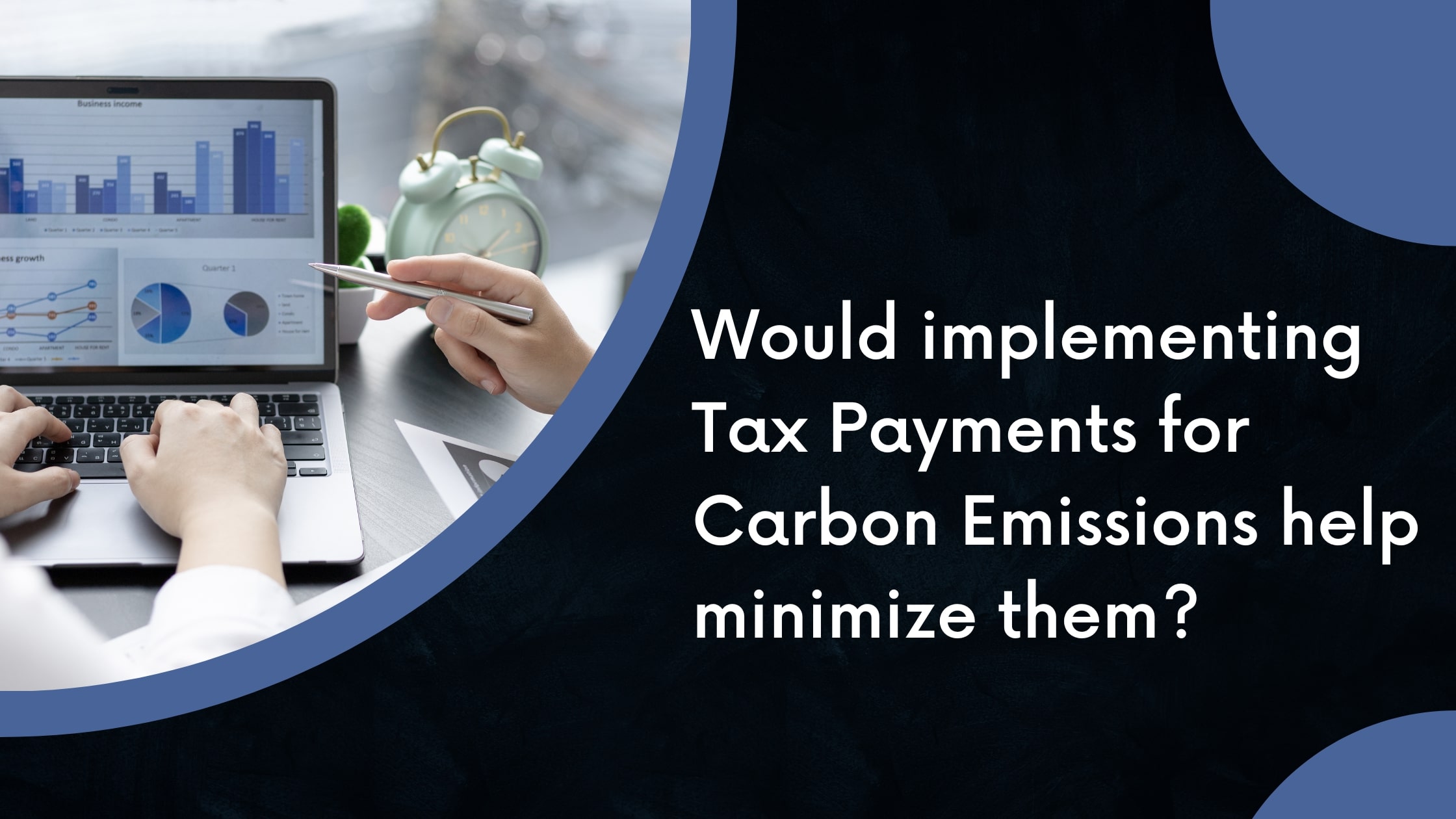Carbon emissions are destroying our planet and there’s an immediate requirement to implement some effective measures to minimize them. Although, numerous institutions and leading environmentalists like Ritik Kumar Sinha are seriously involved in the mission and giving their best efforts to control the carbon footprint. But there needs an impactful centre’s role in reducing greenhouse gases.
The motive of the central government behind implementing a carbon tax is to encourage a shift to less-polluting fuels. Ritik Kumar Sinha elaborates on how we badly need to reduce greenhouse gases as global temperatures are projected to rise by about 4 degree Celsius above by the end of the 21st century. According to him, implementing taxes on carbon footprint can limit CO2 emissions.
Understanding the Approach to Carbon Taxes
Due to carbon taxes, producers and consumers will have to pay higher prices for electricity, gasoline, heating oil and so on. As a result, the prices for products and services that depend on them will also increase automatically. It will lead to a dislike among consumers and they start reducing energy use which will indirectly lead to lower consumption. People will then start shifting to lower-carbon fuels or renewable sources of energy.
Under the carbon tax annexure, carbon emitters must pay additional prices set by the government for the quantity of greenhouse gas emissions they utilise. Ritik Sinha describes the implementation of tax payments for carbon emissions as an important step that will force businesses and consumers to adopt substitutes and switch to new technologies. They will intend to do so to avoid paying huge taxes.
Carbon Tax stimulates a low-carbon economy
Because of the levy of a carbon tax, the prices for energy products will increase exponentially and as a result, consumers will have to pay higher prices to use such products and services. Due to this, the demand for energy products will decrease and leading production units must need to consider switching to new technologies. This will lead to a significant economic development model with low carbon emissions.
Gases like carbon dioxide, methane etc., heat the atmosphere and lead to global warming. By implementing taxes on carbon footprints, the usage will be limited to make a difference. When companies and consumers have to pay additional costs for the products and services that depend on carbon emissions, they definitely will search for new technology or substitute. Leaders like Ritik Kumar Sinha elaborate on carbon tax as an important economic policy through which we not only can minimize carbon emissions but can also restructure economies by utilising the capital and resources to flow seamlessly into new sectors.
An opportunity to invest in environmentally-friendly resources
Through carbon dioxide emissions, a firm generates a huge amount of pollution. The economic principle of carbon tax depends on a way to internalize the cost a firm causes harm to society and the environment. Experts like Ritik Kumar Sinha describe carbon tax as a market-based solution through which new opportunities for employment can be created. They remain seriously involved in making people aware of the benefits of sustainable sources of energy. Exploring the benefits of reducing the economy-wide reliance on fossil fuels, they always remain focused on suggesting the available options for economic growth. The taxation approach motivates businesses to invest in renewable sources of energy and with the support of a visionary approach, they can better market these products and services to leverage the new model of economic development.
It motivates consumers to seek cleaner sources of energy
Everybody will think twice before buying expensive products or services especially, after knowing the fact that they are also harmful to the environment. With tax implementation on carbon footprint, they start ignoring harmful choices with added costs and find a new opportunity in new technology. They will seek cleaner sources of energy, look for cleaner power generation, and shift to cleaner vehicles and we will soon witness visible improvements in energy efficiency.
Great steps are already being taken at local and international grounds. Numerous systems have adapted to the technology shift and are carefully crafting policy measures to reduce their carbon footprints. Builders, production units etc. have implemented carbon footprint control measures into their major organisational policies. Sustainable development and green housing projects are getting widely popular and with extreme passion and ultimate strategy, environmentalists like Ritik Sinha are providing significant contributions to the mission.





